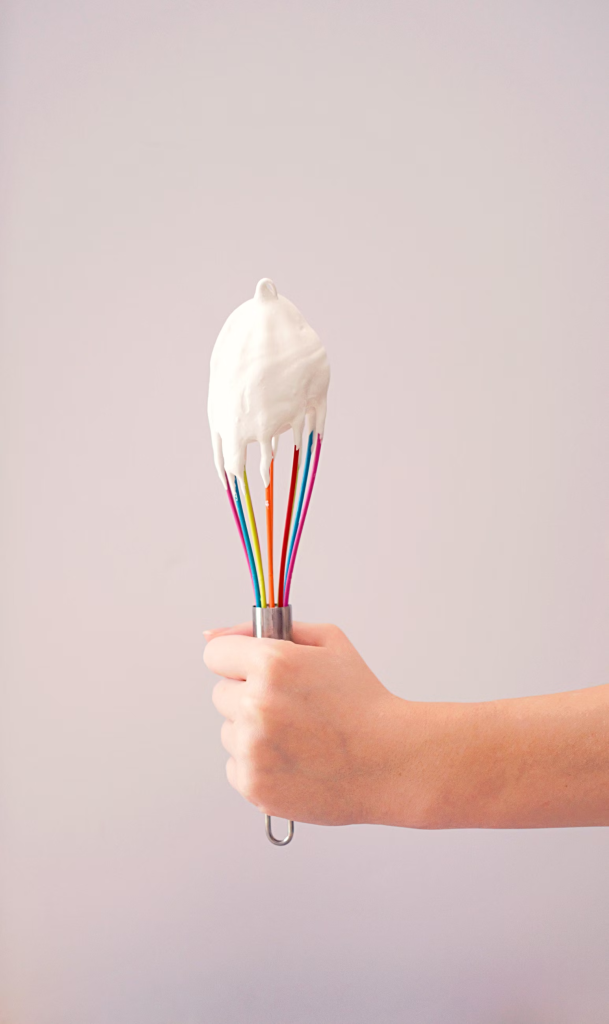The cooking implements we use can transform even the most basic recipe into a work of art in culinary alchemy. With its enchanted power to turn ordinary materials into sensory symphonies, the basic whisk is one of the most indispensable tools in any cook’s arsenal.

Copper whisks are the most popular, drawing interest from both professional and amateur cooks despite the wide variety of whisks available. In comparison to other metal wonders, what makes this one unique?
In this enchanting kitchen investigation, we explore the fascinating realm of copper whisks, learning about their widespread use and the special advantages they provide chefs.
Get ready to be swept away to a realm where the magic of copper becomes a conduit for culinary genius, taking cooking to whole new levels. If you’re a serious home chef or a professional looking for the ideal implement to mix your culinary creations, the copper whisk can be the key you’ve been looking for.
The copper whisk is an essential tool in every kitchen, and we invite you to join us as we explore its many uses and benefits.
Why Use A Copper Whisk?
A copper whisk has several uses in the kitchen, some of which are scientific and others of which are more aesthetic. Among the many cherished kitchen implements, a copper whisk is highly regarded for the following reasons:
- Superior Heat Conductivity: Copper is an excellent conductor of heat, allowing the whisk to respond quickly to changes in temperature. This property is particularly advantageous in tasks like making sauces, custards, or roux, where precise temperature control is crucial. The whisk distributes heat evenly, preventing hot spots and ensuring a smooth consistency in your creations.
- Chemical Reactivity: Copper interacts uniquely with certain ingredients, especially in processes involving egg whites. When whipping egg whites with a copper whisk, the copper ions react with the proteins, creating a more stable foam. This is particularly beneficial in achieving fluffy peaks for meringues and soufflés.
- Aesthetic Appeal: Beyond functionality, copper utensils often bring a touch of elegance and sophistication to the kitchen. The warm, rosy hue of copper can enhance the visual appeal of your cookware collection, adding a touch of style to your culinary space.
- Durability: Copper whisks are known for their durability and longevity. Properly cared for, a copper whisk can withstand the rigours of frequent use without losing its structural integrity. Many cooks appreciate the longevity of copper kitchen tools as they become cherished heirlooms passed down through generations.
- Versatility: Copper whisks are versatile and suitable for various culinary tasks. Whether you’re emulsifying dressings, incorporating air into batters, or whisking together ingredients for a savoury sauce, the flexible and efficient design of a copper whisk makes it a go-to tool for a wide range of cooking applications.
- Anti-Microbial Properties: Copper possesses natural antimicrobial properties, inhibiting the growth of bacteria on its surface. This quality contributes to maintaining a more hygienic kitchen environment, an essential consideration for food safety.
Although copper whisks do need extra attention to avoid tarnish, they are beloved by cooks who value the combination of form and function in their cooking implements due to their distinctive characteristics and enduring beauty.
Whether you’re a professional chef or just someone who loves to whip up delicious meals at home, a copper whisk is an excellent tool to have on hand.
What Are The Benefits Of Copper Whisk?
To many cooks and foodies, the copper whisk is the ideal kitchen utensil due to its numerous useful features. A copper whisk has several benefits, including the following:
- Excellent Heat Conductivity: Copper is an outstanding conductor of heat, responding rapidly to changes in temperature. When whisking ingredients over heat, such as in making sauces or custards, the copper whisk ensures even heat distribution, preventing uneven cooking or scorching.
- Precise Temperature Control: The responsiveness of copper to temperature changes allows for precise control during cooking processes. This is particularly beneficial when working with delicate ingredients that require careful temperature management, such as sugar syrups or egg-based dishes.
- Enhanced Stability for Egg Whites: Copper interacts with proteins in egg whites, creating a more stable foam. This makes copper whisks especially useful for tasks like whipping egg whites for meringues or soufflés, producing fluffier and more voluminous results.
- Versatility in Culinary Tasks: Copper whisks are versatile and suitable for various cooking applications. Whether you’re whisking together ingredients for a sauce, emulsifying a dressing, or incorporating air into a batter, the flexibility of a copper whisk makes it a valuable tool for a wide range of recipes.
- Durability and Longevity: Copper utensils are known for their durability. A well-crafted copper whisk, when properly cared for, can withstand frequent use without losing its shape or effectiveness. Many chefs appreciate the longevity of copper kitchen tools, considering them as long-term investments.
- Aesthetic Appeal: The warm and lustrous appearance of copper adds a touch of elegance to the kitchen. Copper utensils, including whisks, are often prized not only for their functionality but also for their aesthetic appeal. They can enhance the overall visual experience of cooking and food preparation.
- Antimicrobial Properties: Copper possesses natural antimicrobial properties that inhibit the growth of bacteria on its surface. This feature contributes to a more hygienic kitchen environment, promoting food safety.
- Even Mixing and Incorporation: The design of a copper whisk allows for efficient mixing and incorporation of ingredients. Whether you’re blending dry ingredients or working with liquid components, the whisk’s structure helps create smooth and homogeneous mixtures.
Although there are many advantages to using copper whisks, you should be aware that they may need special attention to avoid tarnishing. To keep copper cookware looking and working like new, it’s important to clean and maintain it regularly.
Conclusion
In the kitchen, the copper whisk combines practicality, history, and aesthetic appeal to become a culinary treasure. Beyond its practical use, this equipment stands out due to its remarkable heat conductivity, accurate temperature control, and distinctive interaction with ingredients.
Copper whisks are time-tested kitchen tools that will survive for generations thanks to their adaptability and resilience, ensuring not just delicious dishes but also a cherished family tradition.
As we honour the science and art of cooking, the copper whisk is a symbol of the perfect union of form and function; it beckons both professional and amateur cooks to discover its enchantment and take their dishes to the next level.
More than just a tool for whisking food, the copper whisk has come to represent the artistry and skill required to prepare delicious dishes. Incorporating it into your kitchen will not only make your cooking life easier, but it will also elevate your culinary experience by making your meals look better and taste better.
Because of their classic good looks and long history of use, copper cookware is a treasured part of many cultures’ culinary traditions.
As we delve deeper into the realm of contemporary cooking, the copper whisk stands as a link between the storied customs of yesteryear and the cutting-edge methods of today, beckoning us to relish not only the tastes it contributes to achieving but also the tale it conveys of countless generations of culinary brilliance.
By incorporating a copper whisk into our kitchens, we not only enhance our cooking tools but also bring a fragment of culinary heritage into our spaces, leaving a lasting impression that goes well beyond the dinner table.


Leave a Reply